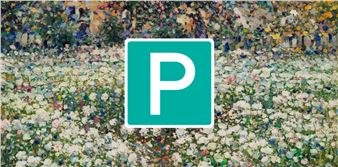ONLINE: Collection of Video Art of the Latvian National Museum of Art
The Latvian National Museum of Art wishes to continue to reach out to its esteemed public and adapts its exhibition format to the conditions of the COVID-19 crisis. From 6 April to 31 May 2020, the visitors of www.lnmm.lv, the homepage of the LNMA, will have the opportunity to see an anti-public exhibition from the video art collection – far away from the museum’s halls, each in their own homes, on their personal display.
For the very first time almost the entire collection of video art of the Latvian National Museum of Art (LNMA), assembled over the last five years, is shown together. The viewers will see a small yet outstanding selection – video works by SarmÄ«te MÄĺliņa and Kristaps Kalns, KÄĺrlis VÄ«tols, Ieva Epnere, Ä’riks ApaÄĽais, Krišs Salmanis, Kristaps Epners, MiÄ·elis Fišers, Maija Kurševa, KatrÄ«na Neiburga, and Krista Dzudzilo. Several works demonstrate a certain trend which, in the context of this crisis, can be seen as an almost prophetic anti-materialist position. Escapism in nature, the necessity to explain the world in interconnections according to a unifying principle, the inability to find fulfilment and spiritual growth in consumerist culture.
The narrative of these works covers a rather broad range – from the religious miracle of the resurrection of Christ during Easter in SarmÄ«te MÄĺliņa and Kristaps Kalns’ work Altar (2006) all the way to MiÄ·elis Fišers’ play with conspiracy theories in his work Language Lesson (2015). The earliest work in the LNMA video collection is KatrÄ«na Neiburga’s feminist project from 2003, Traffic, showing a woman in a role that is fairly dangerous to her – that of a taxi driver. Meanwhile one of the most recent is KÄĺrlis VÄ«tols’ animation The End, created in 2018, about a man affected by midlife crisis, who is trapped in his memories and attempts to come to terms with the sense of physical and spiritual end.
It is hardly a secret that exhibition goers frequently do not even watch video works till the end, since time is scarce and the clock is counting the minutes set aside for seeing the display. Yet at this period, staying at home, hurry should not be a problem. The creators of the exhibition believe that now is the right moment to see works you might have missed or would like to see again.

Recommended for you
The Latvian National Museum of Art wishes to continue to reach out to its esteemed public and adapts its exhibition format to the conditions of the COVID-19 crisis. From 6 April to 31 May 2020, the visitors of www.lnmm.lv, the homepage of the LNMA, will have the opportunity to see an anti-public exhibition from the video art collection – far away from the museum’s halls, each in their own homes, on their personal display.
For the very first time almost the entire collection of video art of the Latvian National Museum of Art (LNMA), assembled over the last five years, is shown together. The viewers will see a small yet outstanding selection – video works by SarmÄ«te MÄĺliņa and Kristaps Kalns, KÄĺrlis VÄ«tols, Ieva Epnere, Ä’riks ApaÄĽais, Krišs Salmanis, Kristaps Epners, MiÄ·elis Fišers, Maija Kurševa, KatrÄ«na Neiburga, and Krista Dzudzilo. Several works demonstrate a certain trend which, in the context of this crisis, can be seen as an almost prophetic anti-materialist position. Escapism in nature, the necessity to explain the world in interconnections according to a unifying principle, the inability to find fulfilment and spiritual growth in consumerist culture.
The narrative of these works covers a rather broad range – from the religious miracle of the resurrection of Christ during Easter in SarmÄ«te MÄĺliņa and Kristaps Kalns’ work Altar (2006) all the way to MiÄ·elis Fišers’ play with conspiracy theories in his work Language Lesson (2015). The earliest work in the LNMA video collection is KatrÄ«na Neiburga’s feminist project from 2003, Traffic, showing a woman in a role that is fairly dangerous to her – that of a taxi driver. Meanwhile one of the most recent is KÄĺrlis VÄ«tols’ animation The End, created in 2018, about a man affected by midlife crisis, who is trapped in his memories and attempts to come to terms with the sense of physical and spiritual end.
It is hardly a secret that exhibition goers frequently do not even watch video works till the end, since time is scarce and the clock is counting the minutes set aside for seeing the display. Yet at this period, staying at home, hurry should not be a problem. The creators of the exhibition believe that now is the right moment to see works you might have missed or would like to see again.
Contact details















